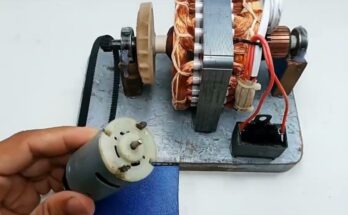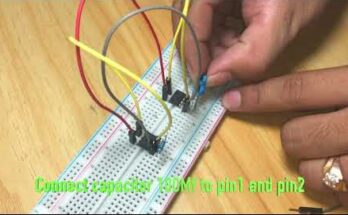The IRFP260N is a powerful N-channel MOSFET well-known for its high current and voltage-handling capabilities, making it an excellent component for building an adjustable DC voltage regulator. This device can handle up to 200V and 46A, which allows it to efficiently control and regulate output voltage in various electronic projects such as power supplies, battery chargers, and LED drivers.
To create a voltage regulator adjustable from 0.5VDC to 25VDC, you can use the IRFP260N as a variable pass transistor, controlled by a reference circuit. The basic design involves an LM317 or TL431 adjustable regulator IC (or a precision reference circuit) that controls the MOSFET’s gate. The IRFP260N acts as the main current-handling element, while the IC provides feedback to adjust the output voltage.
The circuit requires a DC input of around 30V–35V to ensure stable regulation up to 25V output. A potentiometer is connected to the feedback pin of the regulator IC, allowing smooth adjustment of the output voltage from as low as 0.5V up to 25V. For stability, capacitors (typically 100µF and 0.1µF) are placed at the input and output. A heat sink is essential since the IRFP260N will dissipate power as heat depending on the load current.
This setup offers high efficiency, low ripple, and excellent voltage stability. With proper design, it can deliver several amps of regulated DC output—perfect for powering experimental electronics, testing circuits, or as a universal bench power supply. The IRFP260N’s durability and efficiency make it an ideal choice for DIY enthusiasts and professionals building robust, high-performance adjustable voltage regulators.


